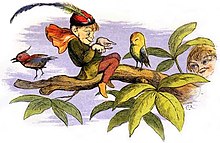
Charles Perrault was a French author and member of the Académie Française. He laid the foundations for a new literary genre, the fairy tale, with his works derived from earlier folk tales, published in his 1697 book Histoires ou contes du temps passé. The best known of his tales include "Le Petit Chaperon Rouge", "Cendrillon" ("Cinderella"), "Le Maître chat ou le Chat botté", "La Belle au bois dormant", and "Barbe Bleue" ("Bluebeard").
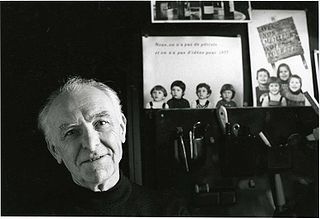
Robert Doisneau was a French photographer. From the 1930s, he photographed the streets of Paris. He was a champion of humanist photography and with Henri Cartier-Bresson a pioneer of photojournalism.

Willy Ronis was a French photographer. His best-known work shows life in post-war Paris and Provence.
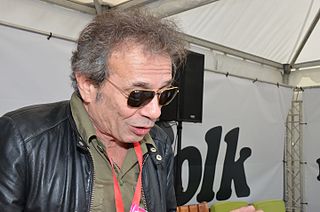
Philippe Manœuvre is a French music journalist.
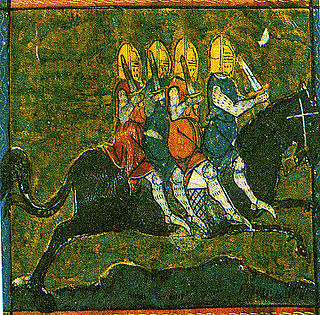
The Four Sons of Aymon, sometimes also referred to as Renaud de Montauban is a medieval tale spun around the four sons of Duke Aymon: the knight Renaud de Montauban, his brothers Guichard, Allard and Richardet, their magical horse Bayard, their adventures and revolt against the emperor Charlemagne. The story had a European success and echoes of the story are still found today in certain folklore traditions.
The Cheval Mallet describes a fabulous and evil horse mentioned in folklore around the French Vendée, Poitou, and more frequently in the Pays de Retz, near Lac de Grand Lieu. It was supposed to appear at night or in the middle of the night as a beautiful white or black horse, saddled and bridled, and tempt travelers exhausted by a long journey. Several legends about the unwary who rode this horse, and never returned unless you have them on the price of travel or protection spell as a medal of St. Benedict. A feast was also known as horse Merlette, Merlet or Mallet in the town of Saint-Lumine-de-Coutais, it had a military function, cathartic celebration of renewal or carnival, and featured several actors around one oak, one disguised as a horse. It was opposed by the ecclesiastical authorities and banned in 1791.

Patrick Grainville is a French novelist.
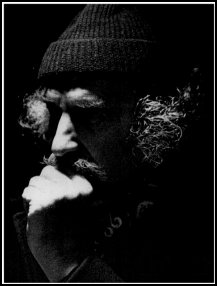
Claude Seignolle was a French author. His main interests were folklore and archaeology before he turned to fiction. He also wrote under the pseudonyms 'Starcante', 'S. Claude' and 'Jean-Robert Dumoulin'.

Christophe Richard Ely Van De Ponseele - professionally known as Richard Ely - is a Belgian writer, journalist and ethnobotanist. Main instigator of the ‘Trolls & Legends” Festival in Mons (Belgium), he is also the former editor-in-chief of Khimaira magazine and the creator of the blog Peuple féerique to which he still contributes today. His books are mainly specialized in fairies and/or nature.
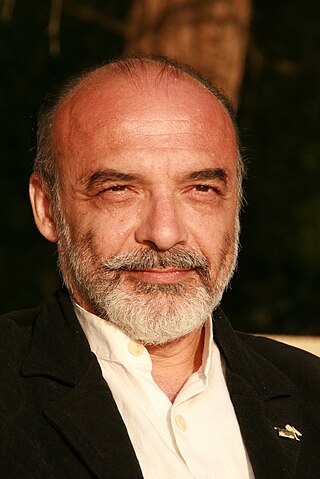
Édouard Brasey is a French novelist, essayist, scriptwriter and story-teller born on 25 March 1954. Author of more than seventy works, many of which have been translated into English, Russian, Japanese, Spanish, Portuguese and Italian. He specialises in the themes of the esoteric, fables, legends and fantasy. He won a prize of Imaginales in 2006 for La Petite Encyclopédie du Merveilleux, and a prize Merlin in 2009 for his novel La Malédiction de l'Anneau. Subsequently, he has become essentially a novelist, notably published by Calmann-Lévy. His historical-esoteric thriller that was published in 2013, Le Dernier Pape, anticipated the abdication of Benoît XVI.
Alain Dugrand is a French journalist, traveler and writer.

A groac'h is a kind of Breton water-fairy. Seen in various forms, often by night, many are old, similar to ogres and witches, sometimes with walrus teeth. Supposed to live in caverns, under the beach and under the sea, the groac'h has power over the forces of nature and can change its shape. It is mainly known as a malevolent figure, largely because of Émile Souvestre's story La Groac'h de l'île du Lok, in which the fairy seduces men, changes them into fish and serves them as meals to her guests, on one of the Glénan Islands. Other tales present them as old solitary fairies who can overwhelm with gifts the humans who visit them.

Lou Drapé is a legendary folkloric horse of the town of Aigues-Mortes in the Gard region, in the Petite Camargue marsh area of France. It is said to wander around the walls of the city at night and to take a large number of children on his back to abduct them. These children never return from this journey.

Le 2.000.000eme disque des Chausettes Noires is the first studio album released by the French rock and roll band Les Chaussettes Noires. It was released on the Barclay label in 1962. The album was later reissued on compact disc.
The Karnabo is a creature of Ardennes folklore. It is reputedly the offspring of a supernatural entity and a Bohemian traveller. The Karnabo resembles a man but with an elephant's trunk for a nose and the eyes of a basilisk. The breath of the creature is said to be able to paralyse men and kill animals. It is said to have abducted a young girl and folklore states that her moans and trumpet of the creature can be heard during thunderstorms.
Margot the fairy is, in the traditions of Brittany and the Mayenne, the generic name for certain earthly fairies. They are best known in Central Brittany, particularly in the Côtes-d'Armor. Presumably descended from the fairy Morgana and before her from an aspect of Mother Earth, the Margot fairies are quite powerful. They can make themselves invisible, metamorphose and transform others. Reputed to be excellent dancers, often generous and sometimes cruel, they take pleasure in testing humans by giving them gold and objects. They are believed to have built several monuments, and to possess immense treasures hidden under the earth. They have animals, often cattle.

Pillywiggins are tiny goblins and fairies, guardians of the flora, mentioned in English and Irish folklore. Tiny in size, they have the antennae and wings of a butterfly or dragonfly, live in groups and spend their time frolicking and frolicking among the flowers.
Jetins are small, imaginary creatures from Brittany, mostly mentioned by Paul Sébillot along the coast of Ille-et-Vilaine and on the island of Guernsey. Compared with similar lutins, they are characterized by their great strength, enabling them to throw huge boulders over very long distances, and by their habitat, mainly in rocks and caves on the shore. They also have a habit, much feared by humans, of kidnapping beautiful babies to replace them with their old-fashioned changelings. Pierre Dubois gives many details on the appearance of Jetins in La Grande Encyclopédie des lutins.
Fions are lutin-like creatures of the little people, mostly mentioned in the maritime folklore of Upper Brittany. They might be of English origin. Most of the stories about them come from Paul Sébillot's collections in the late 19th century. Characterized by their habitat in the rocks and caves of Brittany's northern shores, the Fions lead a military life in community with the houles fairies, as their servants. Organized into battalions, they are said to wage war on a golden ship. According to tales, they own and graze livestock, and sometimes give enchanted objects or food to humans. Pierre Dubois and Joann Sfar featured a Fion in the comic strip series Petrus Barbygère, in 1996 and 1997.

The legendary horses of Pas-de-Calais are fabulous, diabolical white animals, mentioned in the folklore of Artois, Ternoise and Boulonnais under various names. The blanque mare is said to appear at dusk or in the middle of the night to deceive children and men. She would tempt the latter to ride her, and her back could stretch to accommodate, usually, up to seven riders. Once they had settled on her back, she would lure them into traps or throw them into the water. This animal is also mentioned under the same name in Samer.

